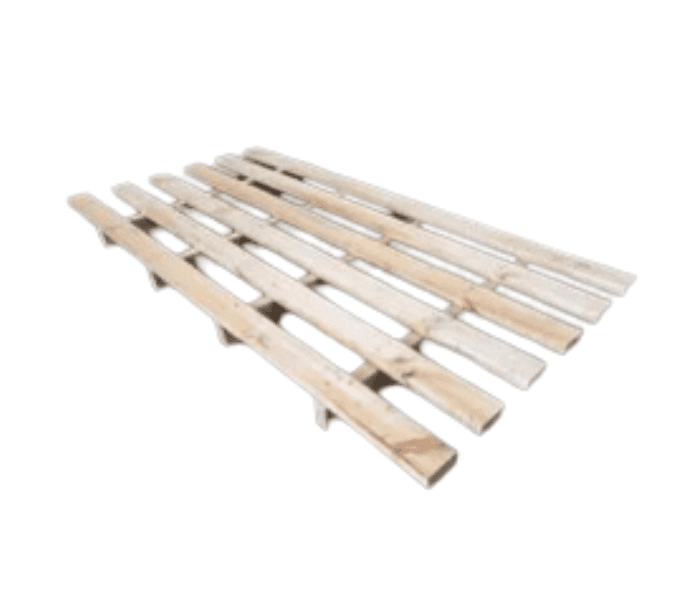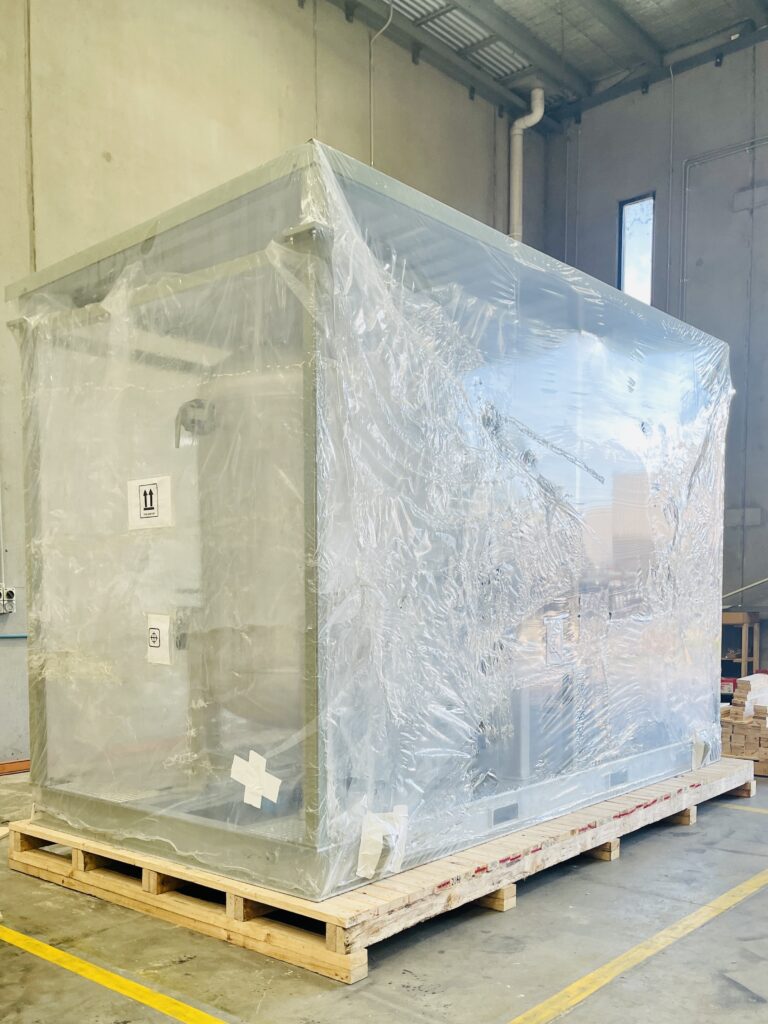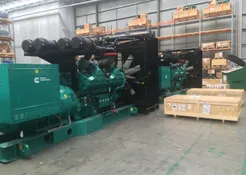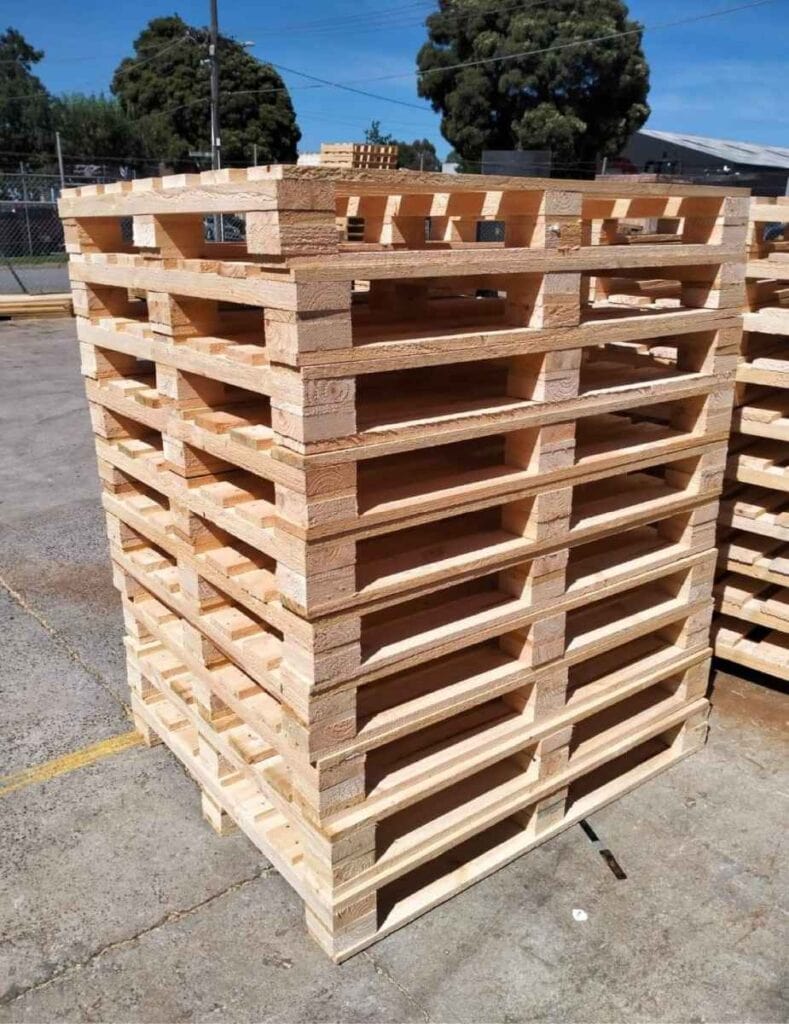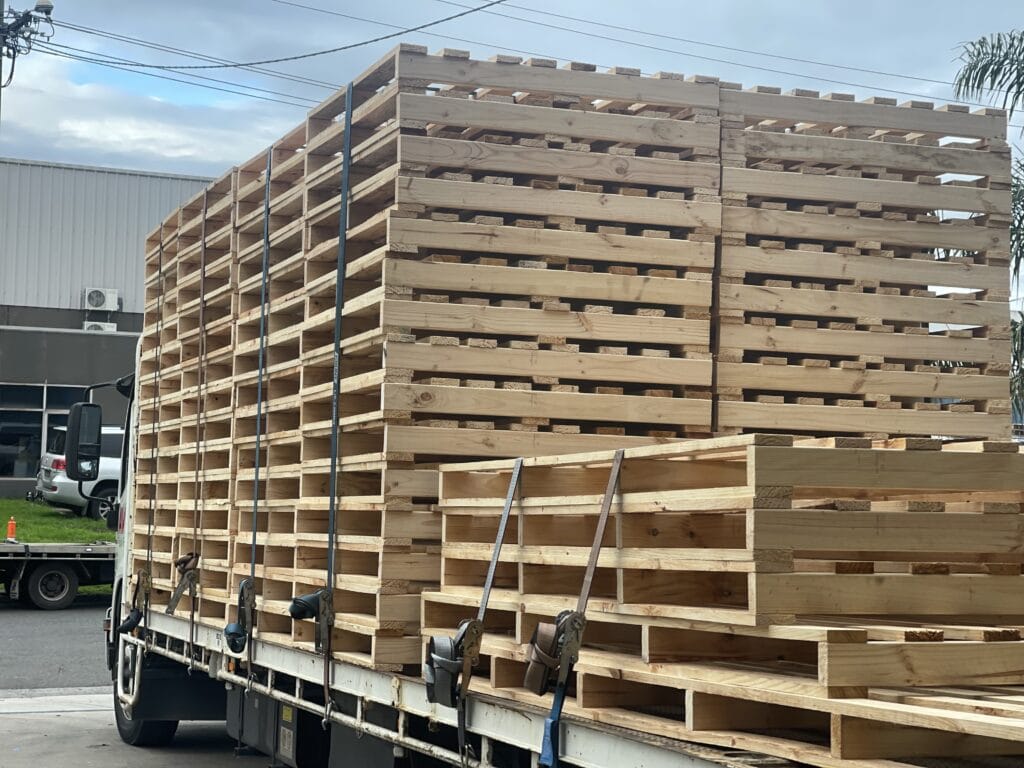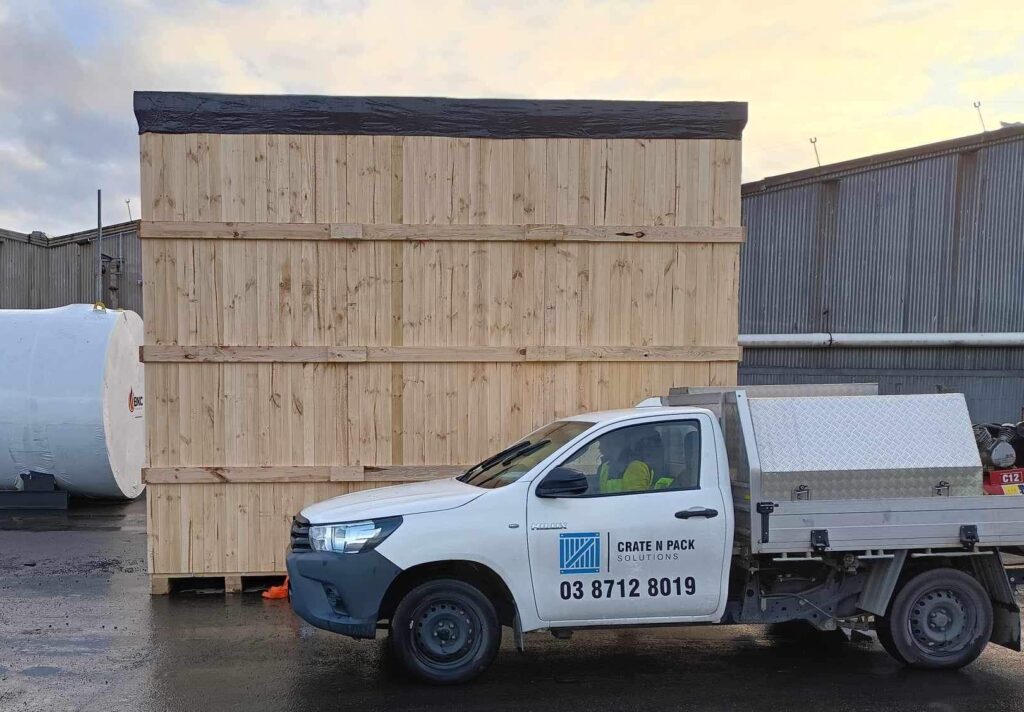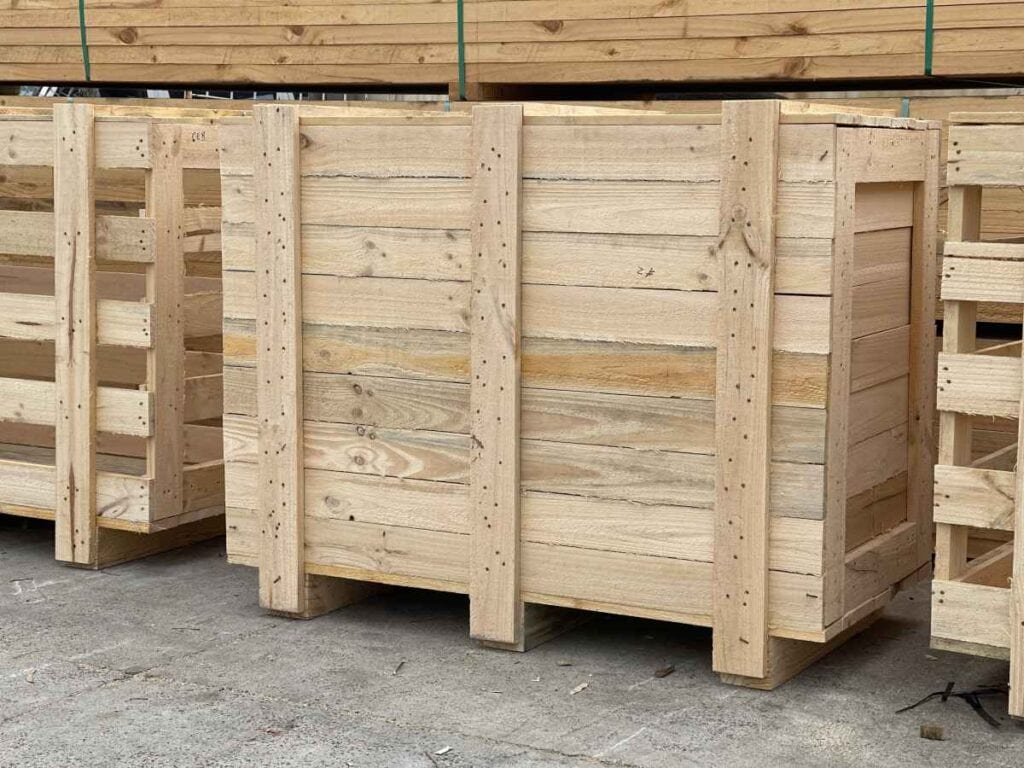Wooden Pallets and Skids: Understanding Their Importance in the Shipping Industry
Wooden pallets and skids are essential tools in the logistics and shipping industry. Their robust design and versatility make them vital for transporting goods across various sectors. In this blog, we’ll explore what wooden pallets and skids are, their differences, benefits, uses, and considerations for choosing the right option for your needs.
What are Wooden Pallets?
Wooden pallets are flat structures made of wood, designed to support goods during transport or storage. They are constructed using deck boards, stringers, and sometimes blocks, allowing forklifts or pallet jacks to lift and move items easily. Wooden pallets come in various sizes and designs, making them suitable for numerous applications.
Key Features of Wooden Pallets:
- Durability: Wooden pallets are strong and can handle heavy loads, making them ideal for various shipping needs.
- Cost-Effectiveness: Compared to other materials like plastic or metal, wooden pallets are generally more affordable.
- Recyclability: They can be repaired, reused, and recycled, making them an eco-friendly option.
- Customizability: Wooden pallets can be made to specific sizes and configurations to meet unique requirements.
What are Skids?
Skids are a type of flat structure similar to pallets, but they usually lack a bottom deck. They are often constructed using wood or other materials and are designed to support goods during transport. Skids are primarily used for heavy or bulky items that do not require full support from a bottom deck.
Key Features of Skids:
- Simplicity: Skids are simpler in design than pallets, making them easier to manufacture and often more lightweight.
- Cost-Effectiveness: Like wooden pallets, skids are generally more affordable and can provide a cost-effective solution for transporting heavy loads.
- Versatility: Skids can be used in various industries, including manufacturing, shipping, and warehousing.
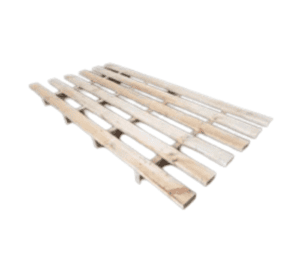
Differences Between Wooden Pallets and Skids
While both wooden pallets and skids serve similar purposes, there are some key differences:
| Feature | Wooden Pallets | Skids |
|---------------------|---------------------------------|-----------------------------------|
| Construction | Made entirely of wood | Wooden base without a bottom deck |
| Strength | Strong but may vary | Generally strong, depending on design |
| Design | Full deck with top and bottom | Open design, usually just a top layer |
| Cost | Typically more affordable | Generally less expensive |
Benefits of Using Wooden Pallets and Skids
Cost-Effectiveness
Both wooden pallets and skids are cost-effective options for businesses. Wooden pallets are generally less expensive upfront, while skids offer durability that can lead to long-term savings by reducing replacement costs.
Versatility
Both types of pallets can be used across various industries, including food and beverage, pharmaceuticals, manufacturing, and retail. They can accommodate a wide range of products, from heavy machinery to delicate items.
Sustainability
Wooden pallets and skids are eco-friendly options, as they can be repaired and reused multiple times. Many suppliers also offer recycling programs to ensure that old pallets and skids are disposed of responsibly.
Improved Handling
The design of both wooden pallets and skids allows for easy handling and transportation. Forklifts and pallet jacks can quickly move these pallets, improving efficiency in warehouses and during shipping.
Customization
Businesses can customize wooden pallets and skids to meet specific requirements, such as size, weight capacity, and design. This flexibility ensures that companies can optimize their logistics processes.
Common Uses of Wooden Pallets and Skids
- Warehousing: Both types of pallets are commonly used for storing goods in warehouses, maximizing space and ensuring easy access.
- Shipping: They are essential for transporting goods by road, rail, or sea, providing stability and protection during transit.
- Retail Display: Skids can be used for displaying products in retail environments, enhancing the overall presentation.
- Exporting: Wooden pallets are often required for international shipping due to their strength and ability to withstand the rigors of transport.
How to Choose the Right Wooden Pallet or Skid
When selecting wooden pallets or skids, consider the following factors:
Load Capacity
Determine the weight and size of the items you will be transporting. Ensure that the pallet or skid you choose can safely support the load.
Material Quality
Look for high-quality wood and construction to ensure durability.
Condition
Inspect the pallets or skids for any damage, such as cracks or missing nails. Damaged pallets can compromise safety and efficiency.
Compliance
Ensure that the pallets comply with relevant industry standards and regulations, especially for international shipping.
Supplier Reputation
Choose a reputable supplier with a track record of providing high-quality products and excellent customer service.
Pallet Maintenance and Repair
To maximize the lifespan of your wooden pallets and skids, regular maintenance is essential. Here are some tips:
- Inspect Regularly: Check for signs of wear and tear, such as cracks, splits, or missing fasteners.
- Clean: Keep the pallets clean and free from debris, especially if they have been used for food or pharmaceuticals.
- Repair: Address any damage promptly by repairing or replacing affected boards, nails, or fasteners.
- Store Properly: Keep pallets and skids in a dry, sheltered area to prevent moisture damage and prolong their lifespan.
Recycling Wooden Pallets and Skids
When wooden pallets and skids reach the end of their life, recycling is an eco-friendly option.
Here are some ways to recycle or repurpose them:
- Wood Chips or Mulch: Old pallets can be broken down into wood chips or mulch for landscaping.
- Furniture: Creative DIY enthusiasts can repurpose pallets into furniture, such as tables, chairs, or shelves.
- Art Projects: Pallets can be transformed into art pieces or home décor items.
- Pallet Recycling Programs: Many suppliers offer recycling programs where old pallets can be returned and processed for reuse.
Conclusion
Wooden pallets and skids are vital components in the shipping and logistics industry. Their durability, cost-effectiveness, and versatility make them ideal for a wide range of applications. By understanding the differences between the two, their benefits, and how to choose the right option, businesses can optimize their operations and improve efficiency. Regular maintenance and recycling further enhance their sustainability, making them a smart choice for environmentally-conscious companies. Whether you need wooden pallets for storage, shipping, or display, these solutions are essential for efficient logistics and supply chain management.
Frequently Asked Questions
Pallets are flat structures used to support goods in a stable manner during transport, storage, and handling. They are crucial in logistics because they allow for the efficient movement of large quantities of goods, reduce handling time, and minimize damage during transit.
There are several types of pallets, including:
- Wooden Pallets: Traditional, versatile, and cost-effective.
- Custom Pallets: Tailored to specific dimensions and load requirements.
- Timber Pallets: Eco-friendly and sustainable, made from renewable resources.
- Export Pallets: Compliant with international shipping regulations like ISPM-15.
Pallets can be made from various materials, including:
- Wood: The most common and economical option.
- Plastic: Durable, lightweight, and resistant to moisture and chemicals.
- Metal: Strong and suitable for heavy loads or industrial uses.
- Composite: A mix of materials that offer specific benefits, like enhanced durability or reduced weight.
Timber pallets offer several advantages, including durability, cost-effectiveness, ease of repair, and environmental benefits through recycling and reuse. They’re also widely accepted in most industries, making them a versatile choice.
When selecting a pallet, consider factors such as the weight and dimensions of your goods, the type of transport (domestic or international), and any specific industry regulations. Custom pallets can be designed to meet unique requirements.
Export pallets are specially designed to meet international shipping regulations, particularly the ISPM-15 standard, which requires pallets to be heat-treated or fumigated to prevent the spread of pests. These pallets are essential for ensuring compliance with global trade laws.
Recycling pallets reduces waste, conserves resources, and lowers the environmental impact of manufacturing new pallets. It also promotes a circular economy, where materials are reused rather than discarded.
The most common pallet size in Australia is the Australian Standard Pallet, which measures 1165mm x 1165mm. Other standard sizes include the Euro Pallet (1200mm x 800mm) and the North American Pallet (1200mm x 1000mm).
Key factors to consider include the supplier’s ability to offer high-quality pallets, customization options, compliance with industry standards, sustainability practices, and the ability to meet your delivery timelines.
At Crate N Pack Solutions, we pride ourselves on offering fast lead times, ensuring that you receive your pallets promptly without compromising on quality. This is especially important for businesses that need to maintain a steady supply chain.
Crate N Pack Solutions offers high-quality, customizable pallets designed to meet a wide range of needs. Our commitment to sustainability, fast delivery, and exceptional customer service makes us a trusted partner in the industry.
Yes, pallets can be fully customized to match your specific requirements, including size, load capacity, and material. Custom pallets ensure the safe and efficient transport of your goods.
Wooden pallets are biodegradable, recyclable, and made from renewable resources. They contribute to reducing carbon footprints by being reusable and repairable, making them an environmentally friendly choice.
Pallets are designed to meet specific load capacities and durability requirements. The construction involves selecting the appropriate material, assembling the pallet to distribute weight evenly, and ensuring it can withstand the stresses of transport and handling.

